Codex
This page contains a catalogue of general-ish information about Antarctica, the South Pole, and life at the Amundsen-Scott South Pole Station. The entries here come from both of my trips to Pole.
Let me know if there is anything you’d be interested in me writing a Codex entry about!
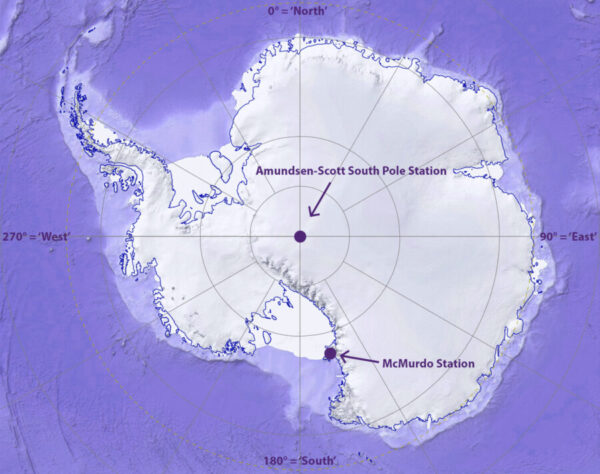
If you would like to receive an email when I add new posts please let me know at danielle@wildantarctic.com.
Or follow on Instagram @wildantarctic
Codex – Many Hands Make Light Work
Sep 2, 2021
While the people working here vary from chefs, to plumbers, to scientists, there is one profession that is entirely absent: janitors. What does this mean for all of us living here? It means that everyone does their part to keep our home clean and tidy. Each week, in groups of 3 to 4, we get assigned cleaning tasks (called House Mouse) throughout the station. Some of the tasks include mopping the hallways, cleaning bathrooms, and shoveling snow. With all of us pitching in to help, the cleaning goes pretty quickly and our home stays nice and clean (though there is quite the competition over the limited number of mops!).
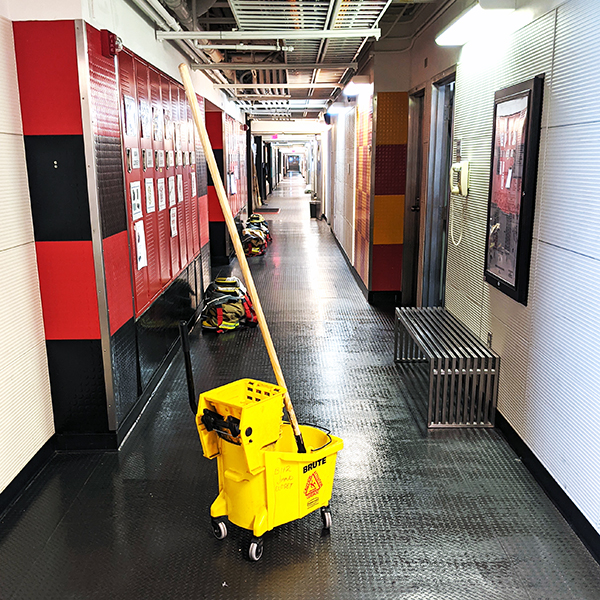
One of the other ways that everyone helps out is by taking a shift washing dishes. All of the dishes (both from the cooking/preparing of food and the eating of it) make their way to the dish pit to be washed and put away. Most of the dish shifts are covered by our steward coordinator but there are way too many for one person to do alone. So, about once a month, each of us takes a shift doing dishes (even our winter site manager!). I’ve usually ended up volunteering more than just once a month though, since I like helping out my friends when it’s their turn and they like to help me out too. It’s a lot more fun (and goes a lot faster!) when you’re working as a team (and having dish pit dance parties!)
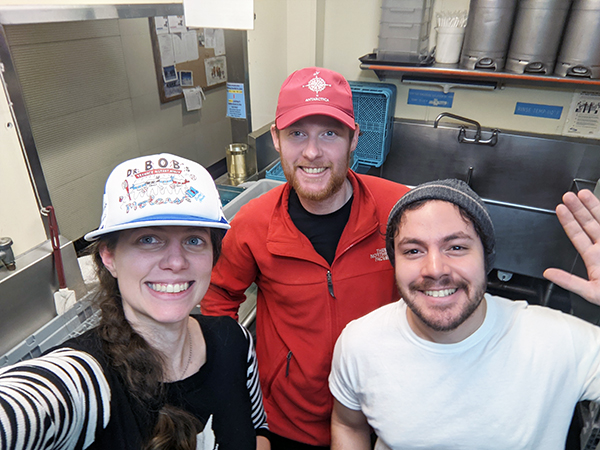
Codex – The South Pole Triple Crown
Feb 27, 2021
Aka Masochism At Its Best
Every year (though I’m not sure how far back the tradition goes) a few insane Polies challenge themselves to complete the South Pole Triple Crown. This involves three physical challenges that must be completed between when the station closes in February and opens again in October (roughly 250 days).
- Run to McMurdo: Run/Walk/Row/Ski/Traverse a cumulative distance equal to the distance between the South Pole and McMurdo (835 miles).
- Lift to McMurdo: Lift a cumulative weight equal to the cargo (and the average fuel) brought in by flights and SPoT (1.36 million pounds).
- Climb Mt Everest: Climb the vertical tower (affectionately called the Beer Can) until you have reached the same altitude that you would by summiting Mt Everest (557 times).
Evidently I’m one of the crazy ones, you’re shocked I’m sure.
There are handy sheets put up to help track everyone’s progress which are definitely intimidating to look at right now (there’s so much to go!).
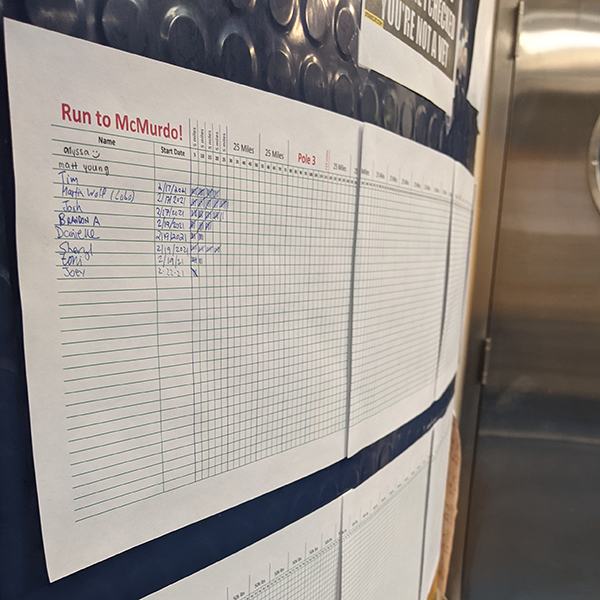
I don’t know that I’ll make it but I’m going to give it my best shot. And hey, I didn’t know I could complete a half marathon either but here we are!
Codex – Scott Base
Nov 24, 2020
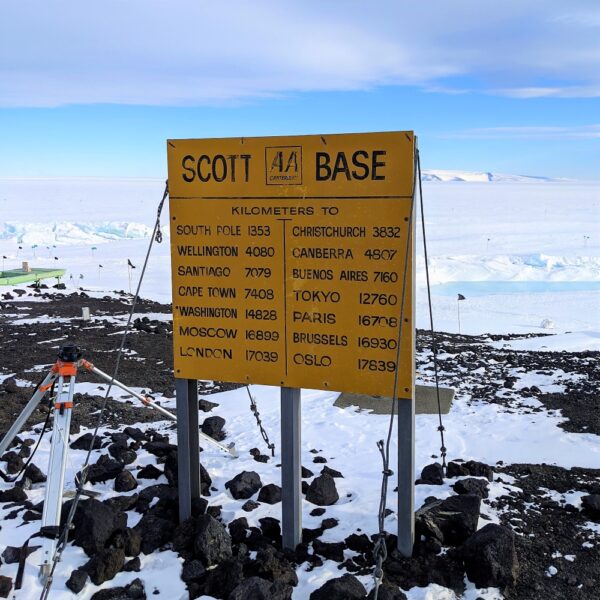
McMurdo is not the only base on Ross Island. Just on the other side of Observation Hill is Scott Base, New Zealand’s station in Antarctica. To get there from McMurdo you can either take the road over the hill or walk around the hill on the ice shelf, and while the road is faster, walking out onto the vast expanse of ice is pretty epic.

Since they are both on Ross Island, McMurdo and Scott Base share a lot of resources including runways and a power grid. There are also events where each base invites the inhabitants of the other to come over and hang out (American Night is very popular on Scott Base!). All of the buildings are green which makes them easy to identify and differentiate from any US buildings.
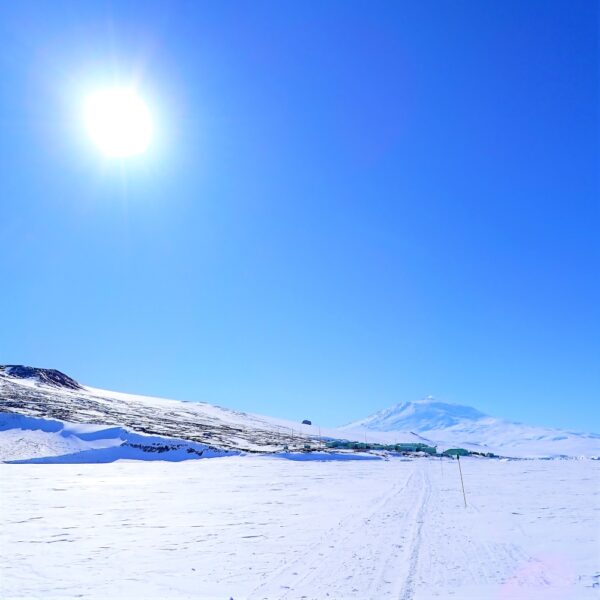
Scott Base is located on Pram Point which is where the sea ice meets the Ross Ice Shelf. The collision of these two bodies of ice causes the ice to buckle and rise creating large ice formation and ridges. Occasionally, when it is safe to do so, you can go on tours to get up close and personal with these structures.
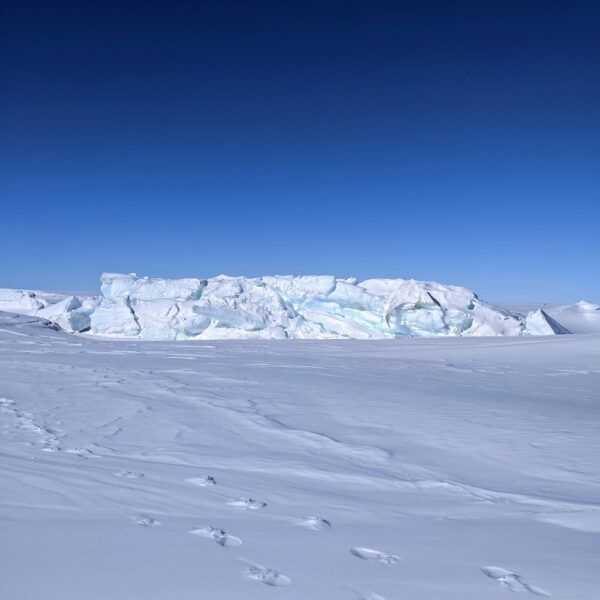
I’ve made it over to Scott Base a couple times, taking both routes to get there (and taking a few vans rides back!). They have a small but well stocked store on base which carries some super warm gear and lots of cool souvenirs. The bar on the base, the Tatty Flag, is very cozy and, unlike the bars in McMurdo, has an amazing view out over the ice shelf.
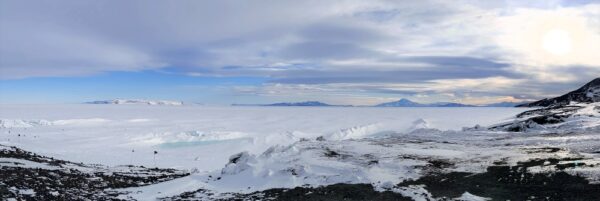
Codex – McMurdo Station
Nov 9, 2020
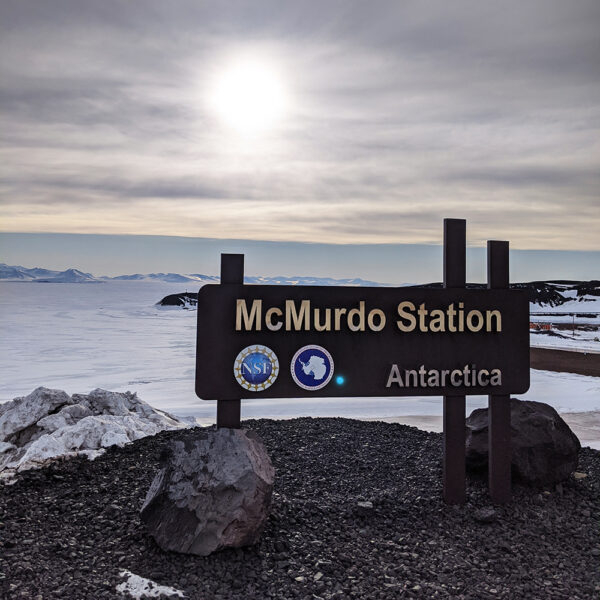
Of the three US bases in Antarctica, McMurdo is the largest. During a typical summer the station can accommodate over 1200 people and serves as the transportation and logistics hub for the rest of the United States Antarctic program. Most all personnel and cargo that are headed to either the Amundsen-Scott South Pole Station or one of the many field camps first pass through McMurdo.

The base was established in 1955 on Ross Island just off of McMurdo Sound on the farthest south solid ground accessible by ship. It is comprised of 80 some-odd buildings including dormitories, a firehouse (it has its own fire department complete with fire trucks!), a power plant, a water treatment facility, a store (stocked with souvenirs, snacks, booze, and essential items you might have forgotten to pack), a medical facility, a galley (serving three meals a day and grab-and-go for those who miss meal times), administrative buildings, a harbor, bars, and even a small chapel (the Chapel of the Snows). Compared to most of the other bases on the continent it is quite bustling and is affectionately referred to as ‘Town’ and the residents as ‘Townies’ (those who stay at the South Pole are called ‘Polies’).
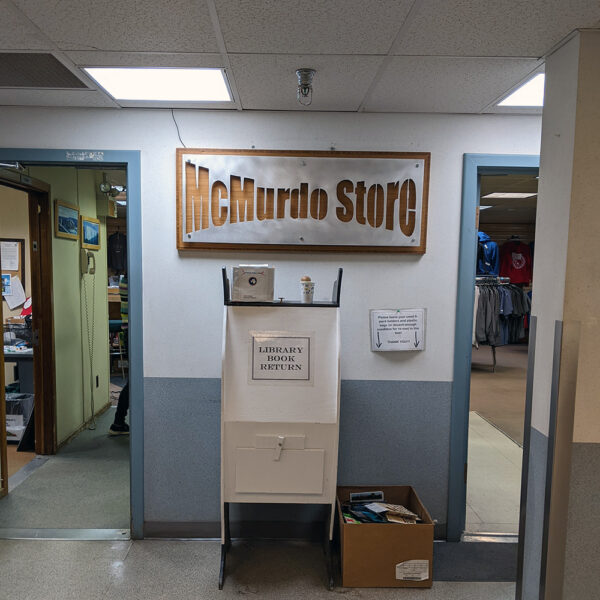
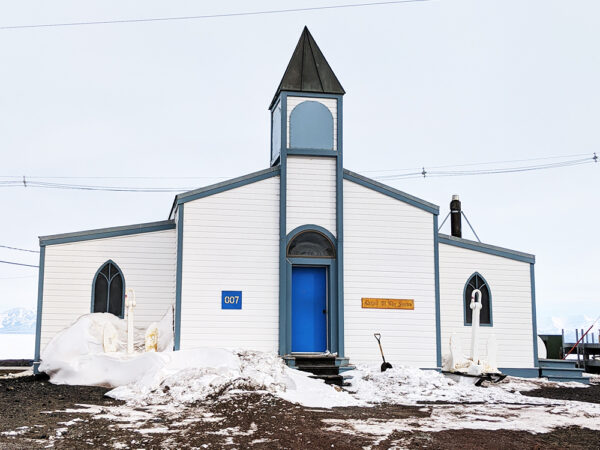
While the primary focus of the base is scientific research, the majority of residents are not scientists. The community is comprised of electricians, plumbers, carpenters, heavy machine operators, waste management engineers, cooks, stewards, power plant engineers, sat/comm engineers, IT specialists, doctors, firefighters, janitors, and so many more. There are quite a few people who have been coming down for summers and/or winters for over 20 (or more!) years. The base is filled with history and stories that get retold year after year. And, occasionally, you come across a hidden gem, like a troll under a bridge.
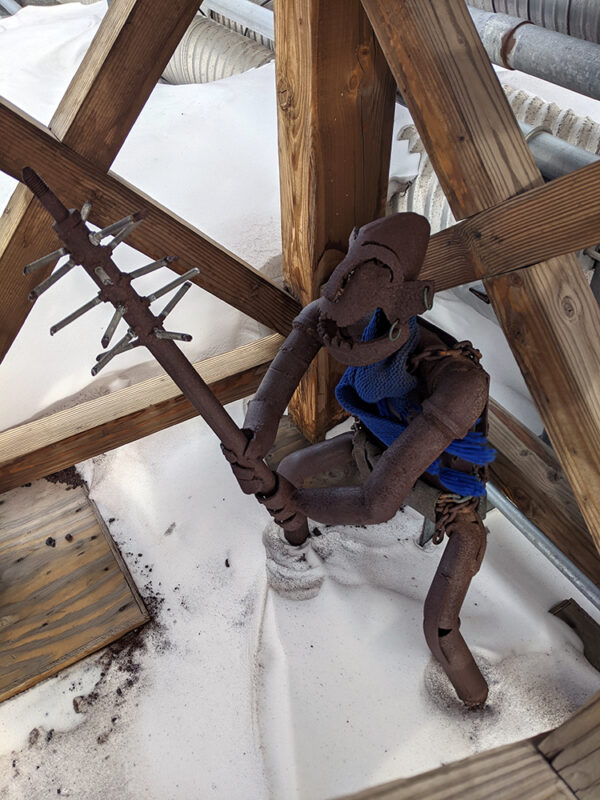
Codex – Packing for Antarctica
Oct 24, 2020
How does one pack for a year at the South Pole? Since there is little opportunity to get anything while there, you have to bring everything with you. And then you start to wonder, what does a year’s supply of shampoo look like? Of toothpaste? While it would be nice to bring an entire moving truck with all of your possessions, you only get a baggage allowance of 85lbs (though this year they are letting Polies bring an extra 15lbs bringing my weight allowance up to 100lbs). I tried to balance my packing between practical things and (theoretically) frivolous things, all work and no play is dull right?
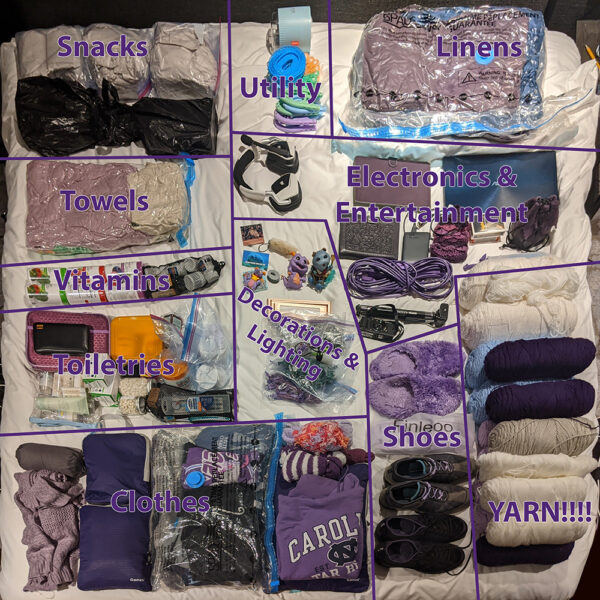
There’s a year’s supply of toiletries (including LOTS of lotion because it’s so dry) and vitamins (Vitamin D for the sun-less winter!), (probably too many) clothes (with fuzzy socks, plenty of thermal base layers, and a swimsuit for the sauna), towels and sheets (I figure you send a third of your time in bed so it is worth it to be comfy), indoor shoes (outdoor shoes are included with the issued Extreme Cold Weather gear), snacks to get me through the year (peanut butter!), twinkle lights and decorations for my room (three sets of twinkle lights isn’t overkill, right?), electronics (laptop, iPad, Kindle, external hard drives with tv shows and movies, camera), around 10 sets of dice (you can never have to many dice!), humidifier (did I mention how dry is it?), and So. Much. Yarn. (I have so many projects planned for the year!)
In all honesty I probably brought too much of some things and not enough of some others. It simultaneously feels like too much and not nearly enough. Though I suppose maybe it could be just right, I guess only time will tell.
Codex – Antarctica Primer
Oct 11, 2020
Let’s just say that in most global map projections, Antarctica gets the short end of the stick. It is either too big or too small or cut into pieces and often looks like a long white strip sitting at the bottom of the world. But for this blog that simply will not do! And so, I present to you Antarctica in all its glory!

For scale, Antarctica is roughly the size of the United States. There are three US research stations: the Amundsen-Scott South Pole Station (where I will be spending 12+ months!), McMurdo station (near the Ross Ice Shelf), and Palmer Station (on the western peninsula). “But every direction is North! How can you have a western peninsula?!” Why, yes, I suppose from the South Pole every direction is North. However, some very smart people came up with a rather simple system so that people don’t get lost trying to figure out which way North to go. Directions in Antarctica are based on a grid system where the 0° longitude line is ‘North’, the 90° line is ‘East, the 180° line is ‘South’, and the 270° line is ‘West’.
Due to its unique location on the planet, the South Pole (and most of Antarctica) only has one long day (the austral summer) and one long night (the austral winter) per year. During the summer the temperatures can get up to a balmy -30F while during the winter temperatures can drop to -120F. There is no transportation to or from the South Pole during the winter months partly due to the extreme cold (jet fuel freezes between -80F and -50F!) and partly due to the roughly one thousand miles between it and the next closest base. And so, a couple dozen crazy people (Hi! That’s me!) volunteer to stay at the base all year long to keep the place running.
Contact Me!
If you have any questions or comments please feel free to contact me at danielle@wildantarctic.com
Some Legal Stuff
This website, www.wildantarctic.com, and all content that is provided under this domain, are private and not intended for any commercial use.
I do not claim any content to be accurate information rather than a product of my imagination or a reproduction of personal memories. The views and opinions expressed here are mine and mine alone.
All contents, including texts and images, are (if not stated otherwise) created by myself and are subject to copyright. If you want to use my texts or images for your non-commercial purposes, feel free to contact me at danielle@wildantarctic.com .
I expressly dissociate myself from all contents of external links on this website. I do not have any influence on those contents.